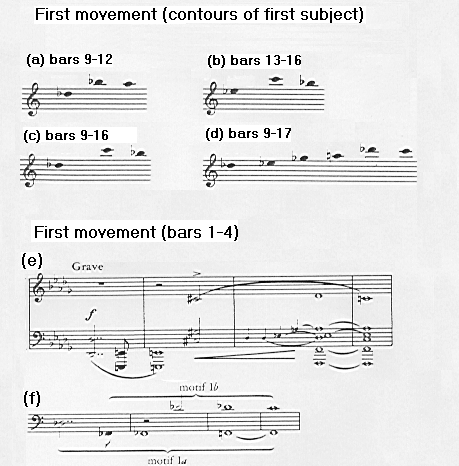Example 9: First
movement: Link between the contours of the first subject
and the introductory motif

Réti also discusses the importance of the motives in the
second half of the first subject. Example 10 shows how he reduces this section
to a phrase formed by a stepwise descent of four notes. Here again he
illustrates unifying aspects of the first and second halves of this theme,
where motif II is a "quasi-inversion" of motif I.
Furthermore, the bass accompaniment of the first subject forms a line
expressing inversions of motives I and II, as shown in Example 11. The detailed
analysis of this first subject reveals that not only the motivic detail, but
also its wider melodic line are